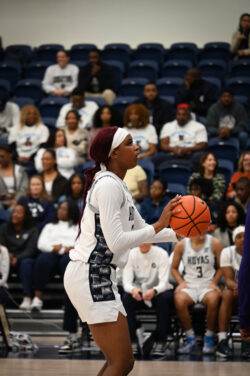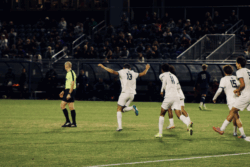In case you haven’t been paying attention to D.C. sports in the last few weeks, the hot topic in town is college football relevancy. This past weekend saw the first time in history that the District’s only two Division 1 programs, Howard and Georgetown, ever met on a football field. Yesterday morning, Mayor Adrian Fenty and a team of D.C. officials, including Councilmembers Jack Evans and Vincent Gray, officially announced the creation of the first ever college bowl game in the District: the EagleBank Bowl.
“You know, the District of Columbia is many things,” Gray said. “It’s a city of monuments, a city with a great government, a city with great leadership. But we also quietly have become a sports leader in this nation.”
The game, which was the brainchild of Evans’ aid, Sean Metcalf, will take place on December 20 at RFK Stadium and will pit the United States Naval Academy against a qualifying team from the ACC.
While the newest addition to the D.C. college football scene will fall far short of turning D.C. into the “Sports Mecca” that Gray hopes for, it’s a sports venture that cannot fail for several reasons.
First, as has been said many times in the build-up and aftermath of this weekend’s D.C. Cup, the District is starved for big-time college football. Georgetown and Howard are certainly not that, but a post-season match-up certainly will be.
The game will garner national support because of the timing and the competition. As the first of 32 bowl games, the EagleBank Bowl will not suffer from the viewer fatigue that occurs in some of the other lower-level bowls. By featuring the Naval Academy as the home team in 2008—the Military Academy is on deck for 2009—the EagleBank bowl guarantees a massive, nation-spanning fan base, and whichever ACC team finds its way into the game will bring with it another large group of faithful within driving distance of the District.
But perhaps the most exciting part of this momentous occasion is that, for the first time in over a decade, big-name football will be played in historic Robert F. Kennedy Stadium. The importance of football in RFK might seem purely symbolic at this point, but for some of the city government’s heavy hitters, it might just be the start of some big doings down the road.
“We as the District of Columbia now have the largest number of professional franchises,” Gray said, adding that there is still one Washington team that plays outside of the District. “Which is that one? Oh yeah, the Redskins. That’s our goal, to get them back in the city.”




